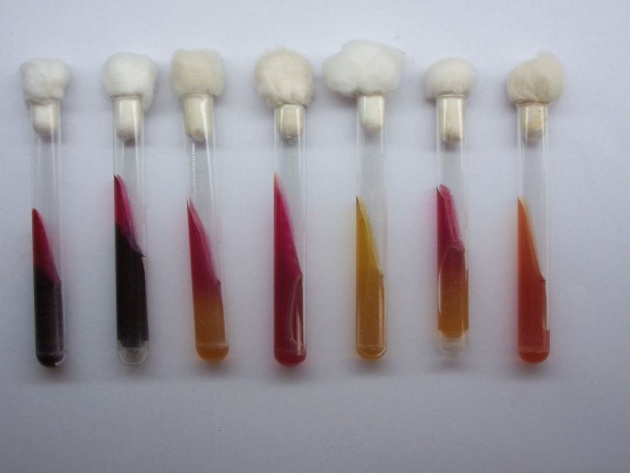Triple Sugar Iron (TSI):Triple Sugar Iron (TSI):Principle:Triple sugar iron (TSI) agar is a differential medium used in determining carbohydrate fermentation and hydrogen sulfide (H2S) production. Gas from carbohydrate metabolism can also be detected. Bacteria can metabolize carbohydrates aerobically or fermentatively. TSI differentiates bacteria based on their fermentation of lactose, glucose and sucrose and on the production of H2S. TSI is most frequently used in the identification of the Enterobacteriaceae, although it is useful for other gram-negative bacteria (Gephart et al., 1994).
Procedure:TSI medium was prepared and slants were formed in the slides. Using a straight inoculating needle a fresh colony of bacterial culture was picked and was inoculated in the medium. Firstly the colony was inoculated by stabbing the butt down to the bottom, then the needle was withdrawn and the surface of slant was inoculated with the colony. The culture was incubated at 37°C for 18 to 24 hours.After 24 hours three possible results were noticed. If results were acidic butt, alkaline slant (yellow butt, red slant) it was considered that glucose was been fermented but mot sucrose or lactose. If results showed acidic butt, acidic slant (yellow butt, yellow slant) it was considered that lactose and sucrose or either one of them was fermented. And if results showed alkaline butt, alkaline slant (red butt, red slant) it was considered that neither glucose, lactose nor sucrose was fermented.If results showed bubble formation, the agar was broken and was pushed upward, it was considered that gas was produced.And if results showed blackening of the butt, it was considered that Hydrogen Sulfide (H2S) was produced.




